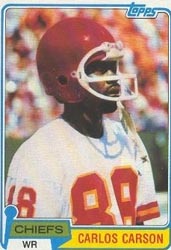Did You Know? Origin of the Chinese Bandits
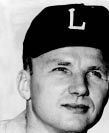
Paul Dietzel
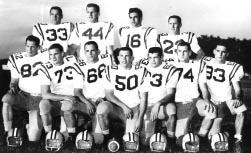
1958 Chinese Bandits
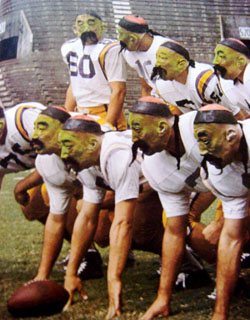
Chinese Bandits in picture from 1958 Life magazine article
|
September 27, 1958: Bear Bryant's first game as Alabama head coach – in Mobile against LSU. Early in the game, Bama's Duff Morrison plucked a Billy Cannon fumble out of the air and rambled 45 yards to the LSU 5. Tiger coach Paul Dietzel waved in an entire new team of defensive specialists. The group of five juniors and six sophomores held the Tide to one yard in three plays, forcing a field goal. LSU went on to win 13-3 for its second victory in what became a 10-0 national championship season.
After the game, Dietzel referred to his defensive unit for the first time publicly as the "Chinese Bandits," a term from his favorite comic strip, "Terry and the Pirates." He had
actually used the monicker for the defensive unit at Cincinnati in 1950 while coaching under Sid Gillman. However, the name didn't catch the nation's attention until LSU won game after game in 1958.
The Bandits were one of three platoons Dietzel employed to fit the new NCAA substitution rules. A player in the game at the beginning of a quarter could return only once during that quarter, and a player not in the game at the start of the period could not come back until the next quarter. Pepsodent Paul put his best two-way athletes on the White Team. The Go Team were offensive specialists while the Bandits concentrated on defense. The added depth wore down opponents throughout the season.
The Bandits scored one offensive TD that year. With the score tied 6-6 against Duke, DE Gaynell
Kinchen (whose two sons later played for LSU)
recovered a fumble at the Blue Devil 2. Dietzel kept the Go Team on the sidelines and let the Bandits, who knew a few offensive plays in case the substitution
rules forced them to stay on the field after a change of possession, score the go-ahead TD.
After LSU ascended to #1 in the AP Poll, Life magazine did an article on the Bayou Bengals. It did not feature star RB Billy Cannon or any other White Team player.
Instead, it focused on the Chinese Bandits. Called the "best third team in football," the undersized but quick unit specialized in Gang Tackling. For the season, opponents gained only 0.9 yard per play
against them!
The Tiger Stadium P.A. announcer would shout "Here come the Chinese Bandits!" when they entered games. This undoubtedly started the tradition whereby Tiger fans yell loudly and spur on the defense from the beginning of the game. The Golden Band from Tigerland still plays the Chinese war chant (actually written by a Memphis DJ) whenever the defense leaves the field after a stop.
Reference: Eye of the Tiger: 100 Years of LSU Football, Marty Mule |
Interesting Story: Leave Coach Dietzel Alone!

Paul Dietzel
|
Paul Dietzel, who coached LSU to its first national championship in 1958, had an unusual pregame ritual.
- Dietzel would have lunch with the team, then go to his office and read a book until it was time to get ready for the game. "I never listened to or or watched football games, and everyone knew I wanted to be alone."
- AD Jim Corbett, who hired Dietzel, intruded on the coach's pregame solitude only once in seven years. That was on October 31, 1959, the day of the famous game against Ole Miss at Tiger Stadium. Knocking on the door, Corbett brought in a Colonel Rebel doll that was made up with a blackened eye and tape all over it. The sign on the doll said, "Hell, Coach, them Tigers are hell!" Corbett affixed his own message to the figure. "Somehow, coach, I feel this is our night."
- That night, of course, Billy Cannon's 89y punt return and the subsequent goal-line stand defeated the Rebels 7-3 to keep LSU #1.
|

Jim Corbett |
Did You Know? Six Straight TD Catches
Carlos Carson is the only college player to catch six
consecutive passes for TDs. They were also the first six receptions of his college career!
He made his debut as a sophomore at LSU in 1977 by catching
five TD passes from Steve Ensminger and David
Woodley in a 77-0 pasting of Rice.
His 30 points in that game remains a Tiger Stadium record. The next
week, he scored on his first reception in a 36-14 win over Florida.
He ended the season with 23 catches, 10 of which were TDs.
The
next year against Georgia he caught an 82-yard TD pass from Ensminger to set
another Tiger Stadium record.
Carlos played 10 years in the NFL, mostly with the Kansas City Chiefs.
In 1983, he caught 80 passes for 1,351 yards and 7 scores.
|
|
Reference: Touchdown: Great Moments and Dubious Achievements in Football History, John S. Snyder
Interesting Story: How Addai Ended up at LSU
|
This story concerns Joseph Addai, RB for the Colts from LSU.
- Until his senior year of high school, Joseph knew he wanted
to play football at Texas,
but otherwise he thought little about the future.
- He
was a lefty, option-style QB for Sharpstown High in the Houston area. In his junior season (1999), he won District
Offensive MVP over Vince Young from nearby Madison
High. He lost out to Young as a senior but
had 1,429 rushing yards and 26 TDs. So he was recruited as a TB, not
a QB.
- His life changed after his close friend, S LaJuan Moore,
was paralyzed from the chest down while making a tackle during a game
their junior season. He can move his arms but not his fingers.
- "Texas had been my first choice," Addai says. "But
after the accident, I wanted to experience something else, learn more
about life."
- He decided to go to LSU because it was close enough for hometown visitors but far enough away
to provide a change of environment.
- He had only one request for the Tigers:
a wheelchair-accessible room. Moore made frequent
visits on game weekends. Having his friend around helped Joe feel at home in Baton Rouge. He credits Moore with inspiring him to battle through injuries during his college career.
"He always has high spirits. There's all this confusion going
on in the world, and he's still up, and that rubs off on me."
|
|
Interesting Story: LSU AD on His Coaches
Lee Feinswog in his Tales from the LSU
Sidelines relays stories that Joe Dean,
the LSU AD from 1987-2001, told him about the
football coaches Dean worked with or hired
during his tenure.
Mike Archer
- Mike was hired during the interim period between the firing
of Bob Brodhead and the hiring of Joe
Dean. Bill Arnsparger hand-picked
his 33-year-old D coordinator as his successor. After
starting 10-1-1 in 1987 for a #5 AP ranking, Archer slumped to 8-4 in '88 but with an SEC co-championship.
Then came 4-7 in '89 and 5-6 in '90, at which point Dean fired him.
- "Mike was a very nice person, and I liked him," says Dean.
"But he was very immature at that point. And very
inexperienced. He had never even been a head high school
coach. Looking back, I'm surprised that they hired him.
But he was a very nice guy with above-average intelligence."
- "Bud
Davis [LSU chancellor at the
time and former football coach] knew early, before I did,
that we had the wrong coach. He was analyzing his recruiting
and we weren't getting good players. ... His staff was
shaky ... I had two or three of his assistants come to
me and say, 'You've got to make a change. This guy can't
make it.'"
|
 |
Curly
Hallman
- Curly was the USM coach whose QB was a country
boy named Favre. "Everywhere I turned
someone would say to me, 'This guy can't miss,'"
says Dean. John David Crow, Texas A&M AD, said, "'Joe, this guy will work
his ass off and he communicates with blacks as well as
anybody you've ever seen,' which was true. Everybody thought
he was a diamond in the rough. But I knew after a year
that he wasn't very bright."
- After
starting 5-6 in '91, Curly hired Lynn
Amadee as his new O coordinator. Hallman had turned around the recruiting and hoped Amedee,
who had worked with him at A&M,
would improve the O. Dean: "It was
a critical hire. [But] for whatever reason, the chemistry
wasn't there." The team fell to 2-9 in '92, followed
by 5-6 in '93 to raise hopes. When '94 ended 4-7, Dean says, "I had to fire him. ... But I'll never forget
this: Gerry DiNardo's very first spring
training practice he said to me, 'Are you aware there's
some talent here?' Oh yeah, I was aware."
|
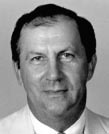 |
Gerry
DiNardo
- Dean offered the job to Mack Brown, then head
coach at North Carolina.
However, Brown wanted more money than LSU would give. Dean also interviewed Ron Zook, an assistant
at Florida. Dean says he also met with Bill
Snyder, the Kansas Statecoach. Dean was very impressed, but Snyder called
a few days later to withdraw.
- Dean then turned its attention to Pat Sullivan,
head coach at TCU and former Heisman QB at Auburn.
One problem was Sullivan's large buyout.
"He told me he would handle it, but he was a nice,
naive kind of guy in a lot of ways." The Board actually
voted for Sullivan over DiNardo 4-3. However, Sullivan had to withdraw
when he couldn't negotiate away his $400,000 buyout and LSU refused to pay it. In the meantime, Phil Bennett, the D coordinator at LSU,
had told Dean: "You will make a
mistake hiring Pat Sullivan. He's a nice
guy but he's not a good football coach. Everybody knows
that. The other guy [DiNardo] is better."
Three years later, Sullivan resigned
at TCU during a 1-10 season.
- DiNardo had "the greatest interview of all time," according
to Dean. DiNardo also
told him, "Yeah, I have a buyout [at Vandy].
It's my responsibility and I'll handle it. Don't ever
bring it up again."
- Gerry started strong, ending the string of six straight
losing seasons and taking LSU to three
straight bowl games. Then the program disintegrated rapidly.
|
 |
Nick Saban
- At
first, Saban wasn't on LSU's
radar screen. "We did all but offer the job to Butch
Davis [head coach at Miami].
... He made a comment to me, 'Tell me why your job's better
than mine.' At that point, he knew he had a good team.
He's in an easier league; this is a tough job.'"
- Dean was setting up other interviews when he got a call out
of the blue that led to the Saban interview.
"He basically got the job by default. Hell, we didn't
have anybody."
|
 |
Pro Football Hall of Famers – I
Three former Tigers are enshrined in the Pro Football Hall of Fame in Canton OH: Steve Van Buren (elected 1965), Y.A. Tittle (1971), and Jimmy Taylor (1976). Interestingly, none are in the College Football Hall of Fame.
Steve Van Buren (1941-42-43)
- Born in Honduras, this redhead came to New Orleans as a boy. Rejected for the football team at Warren Easton High School because he weighed only 127, Steve dropped out of school before his junior year to build himself up.
- A year later, weighing 168, he made the squad. With all-preppers occupying the backfield, Steve played E. His end-around runs caught the eye of Ike Carriere, former Tiger who scouted for LSU.
- After a year on the freshman team, Steve started at E on the Tiger varsity in 1941 before being moved to blocking back a few games into the season. He made a key run in the Tulane game before a record throng of 50,764 at Tulane Stadium. Pete Finney describes the play:
When the ball snapped, the Tiger line stepped aside and allowed the Greenies to converge on Leo Bird. When the green shirts were within a yard, he flipped the ball over their heads to ... Van Buren standing a yard behind the line of scrimmage. Van Buren, behind a wall of interference, rambled 62 yd before being caught from behind. LSU didn't score on the play, but, emboldened by the success of this maneuver, the Tigers gambled their way to a 19-0 decision.
- In 1942, Steve started the season at HB but was quickly eclipsed by a sensational sophomore named Alvin Dark. Moore returned Van Buren to QB (blocking back) for the remainder of the season.
- In 1943, Coach Bernie Moore found himself without a veteran TB thanks to Dark's departure to military training. So he installed Van Buren, who had been rejected by the military because of vision problems. (In fact, there had been concern that he would lose sight in one eye.) Steve worked long and hard to learn how to pass and punt since TB was the Triple Threat position at the time. The old man on a typical wartime squad composed primarily of 18-year-olds, Steve gained 832 yd rushing to lead LSU's "all civilian team" (to quote the New York Times) to their first Orange Bowl appearance.
- On New Year's Day 1944, Van Buren ran for two TDs and passed for another as the Tigers upset Texas A&M 19-14. His 98 points for the season reigned as the LSU record until Charles Alexander broke it in 1977.
- Drafted in the first round by the Philadelphia Eagles in 1944, Steve fashioned a solid 8-year NFL career. He led the Eagles to back-to-back championships in 1948 and 1949. He is still considered the greatest Eagles RB ever.
- After Steve's departure from LSU, Bernie Moore stated: "He probably was the greatest RB in SEC history, and I used him as a blocking back until his last year. Folks down in Baton Rouge will never quite get over it."
Reference: The Fighting Tigers II: LSU Football 1893-1980, Peter Finney
|
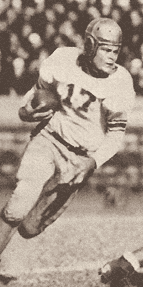
Steve Van Buren, LSU
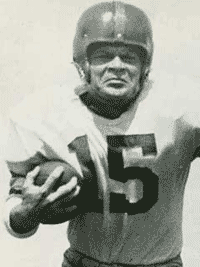
Steve Van Buren, Philadelphia Eagles
Top of Page |
Pro Football Hall of Famers – II

Y. A. Tittle, LSU

Y.A. Tittle, San Francisco 49ers
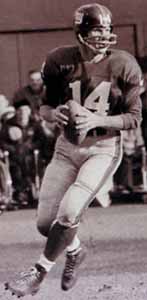
Y. A. Tittle, New York Giants
Top of Page |
Three former Tigers are enshrined in the Pro Football Hall of Fame in Canton OH: Steve Van Buren (elected 1965), Y.A. Tittle (1971), and Jimmy Taylor (1976). Interestingly, none are in the College Football Hall of Fame.
Y. A. Tittle (1944-47)
- Future Pro Football Hall of Famer Steve Van Buren left LSU after the 1943 season. The very next year, a 17-year-old tailback named Y. A. Tittle arrived in Baton Rouge. Yelverton Abraham followed his older brother Jack to Louisiana but to Baton Rouge, not New Orleans, where Jack had played for Tulane. As a boy in Marshall TX, Y. A. spent hours in the back yard throwing a football at a tire swinging from a tree trunk and to his younger brother Don. Sammy Baugh of TCU and the Washington Redskins was the budding quarterback's idol.
- The 180-lb Tittle was as big as many lineman of that day. In addition to his impressive passing, he played defensive back as well. And, best of all, his 4-F draft classification meant he didn't have to enter the military. As a result, he was highly recruited. Having seen LSU play a number of times, Y. A. committed to The Ole War Skule. He liked the fact that Tiger players lived in an athletic dorm whereas Green Wave athletes lived in boarding houses.
- But a funny thing happened on his way to Baton Rouge. Y.A. succumbed to pressure to go to Texas instead. "It will help your business career after college." While working a summer job in Austin, he roomed with another Longhorn freshman-to-be named Bobby Layne. (What are the odds of two future Hall of Fame QBs who are not related sharing a room as teenagers?)
- Not liking Bobby's partying lifestyle – "He was 17 years old going on 35, and I was 17 going on 14." – nor the thought of competing against him for the starting tailback spot at Texas, Tittle was receptive when LSU assistant Red Swanson came to Austin to convince him to honor his commitment to LSU. Since he had not yet enrolled in Texas, Y. A. violated no rules when he agreed. Before they left the Lone star capital, Swanson insisted his new recruit phone Coach Dana Bible and tell him of his decision. Y. A. went to a phone booth and faked the call to placate Red.
- One of the first things Tittle did when football practice started was change his name. When publicist Jim Corbett (later LSU Athletic Director) read the data form each freshman filled out, he asked Tittle what Y. A. stood for. "That's my name, my full name." This turned out to be another pretense, just like the phone call. Corbett contacted the courthouse in Marshall and found out that Tittle's real name was Yelverton Abraham. When Jim asked him about it, Y. A. said, "I'd appreciate it if you lay off using my name." (Can you blame him?)
- The T formation was spreading across college football following the success of teams like TCU with Baugh and Davey O'Brien and Stanford's undefeated "Wow Boys" of 1940 with Frankie Albert. Bernie Moore still ran the single wing during Tittle's freshman year (1944) but switched to the T the next season – the first SEC school to do so.
- The new formation suited Y. A. to a T. During his four years at LSU, he threw for 2,525 yd and 23 touchdowns, both prolific numbers for that era. He particularly enjoyed his four contests against his brother's alma mater. As a freshman, he connected on his first 12 passes against the Green Wave, finishing 11-of-13 in a 33-0 rout. Tittle's school record for consecutive completions lasted for over 50 years. His career total against Tulane was 42-of-56 and eight touchdowns.
- Tittle began his pro career in 1948 with the Baltimore Colts of the All-America Football Conference. He moved with the Colts into the NFL in 1950 before the franchise was disbanded after one year. Y.A. played for the San Francisco 49ers for 10 years. He made the Pro Bowl for the first of seven times in 1953 and All-Pro for the first of three times in 1957.
- He is best remembered for the last four years of his career spent with the New York Giants. His best season came in 1962 at age 36 when he amassed 3,224 yd passing as the Giants lost to the Packers in the NFL Championship Game. They lost in the finals again the next year when Tittle gained another 3,145 through the air. He retired at age 38 after the 1964 season.
- Y.A. entered the Pro Football Hall of Fame in Canton OH in 1971.
Read a more complete profile of Y. A. Tittle on this website.
References: The Fighting Tigers II: LSU Football 1893-1980, Peter Finney
Game of My Life: LSU, Marty Mule | What It Means to Be a Tiger, Ray Glier
|
Pro Football Hall of Famers – III
As of this writing, three former Tigers are enshrined in the Pro Football Hall of Fame in Canton OH: Steve Van Buren (elected 1965), Y.A. Tittle (1971), and Jimmy Taylor (1976). Interestingly, none are in the College Football Hall of Fame.
Jimmy Taylor (1956-7)
- Jimmy was a multi-sport athlete at Baton Rouge High. He excelled in basketball, making All-State his senior year as a 5-11 guard on the Bulldogs' state titlests and playing in a national all-star game. "I got more offers to go to college in basketball than I did in football." Taylor was also one of the first weight training students of Alvin Roy at his Baton Rouge Studio. As a result, he blossomed on the gridiron his senior year as a TB in the single wing, becoming the first athlete in Louisiana history to play in both the All-Star football and basketball games.
- Taylor accepted LSU's offer of a football scholarship. Coach Clarence "Pop" Strange, after nearly a half-century at LSU, called Taylor "probably the finest freshman athlete I've ever seen." However, in Jim's own words, "schooling wasn't my strong suit." So after starring on the freshman team, he transferred to Hinds Junior College (MS) for a year-and-a-half. "I went out to Colorado and looked at that school after Hinds but then decided I would came back to LSU for my junior season (1956)."
- He didn't become an all-star player for Paul Dietzel immediately. In fact, he recalls that "I was not even first-team until midway through my junior season." He kicked off and booted PATs but didn't run the ball too much as a FB. He enjoyed playing LB for Coach Cholly Mac's D as most Tigers played both ways two years before Dietzel created his three-platoon system.
- As he caught on to the O, Taylor came on strong as the season progressed. After scoring only eight points in the first five games of 1956, all losses, he tallied 51 in the last five to lead the SEC as the Tigers won three games to salvage Dietzel's job. He sparked the season-ending 7-6 victory over Tulane, scoring all 7 points, making a TD-saving tackle, and a late INT on the Tiger 8. (A high school senior watching from the upper deck of the North End Zone at Sugar Bowl Stadium remembers the game fondly.)
- Joined by Billy Cannon and the other members of the outstanding freshman team of 1956, Taylor produced an All-American season in 1957. His 171y against Georgia Tech, a game in which he scored every one of the Tigers' 20 points, was the second highest in school history to that point. Once again, Jimmy ripped the Green Wave to help LSU finish 5-5 and again guarantee another season for Dietzel, a season that would produce a national championship. Taylor finished his college career by earning the MVP award at the Senior Bowl in Mobile (where a Spring Hill College freshman watched him run and kick).
- The Green Bay Packers selected Taylor in the 2nd round of the 1958 NFL Draft (15th overall). After his rookie season, Vince Lombardi took over the team and made Jim one of the cogs of his O. As a result, Jimmy set many Green Bay records, including career rushing yds, TDs, and single-season TDs. He won the NFL rushing title in 1962, the only season Jim Brown didn't lead the league during the latter's nine-year career. That was the high point in a string of five straight years in which the LSU alum gained over 1,000y. Taylor's one-year mark of 1,474y (in 14 games) was not surpassed by a Packer until 2003 when Ahman Green gained 1,883 (in 16 games). Teaming with Paul Hornung as one of the most famous RB duos in NFL history, Jim played on four NFL championship teams (1961, 1962, 1965, and 1966).
- His hard-running style – Taylor was famous for running through tacklers rather than around them – took its toll. So in 1967, the Packers did not protect him from the expansion draft. Anxious to sign a local hero for his new team, Saints owner John Mecom chose Taylor and signed him to a lucrative long-term contract. However, Jimmy was not able to contribute much to his home-state team, retiring after one injury-plagued season.
- Taylor entered the Hall of Fame in Canton OH in 1973.
References: Game of My Life: LSU, Marty Mule | What It Means to Be a Tiger, Ray Glier
|

Jimmy Taylor, LSU

Jimmy Taylor, Green Bay Packers
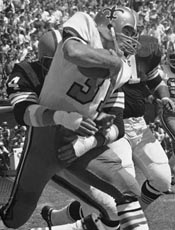
Jimmy Taylor, New Orleans Saints
Top of Page |
Streak Buster: North Carolina 1949
Heading into the 2010 opener in Atlanta, LSU has played North Carolina six times and won five. The loss occurred in the first matchup in 1948, 34-7 in Chapel Hill in Gaynell Tinsley's first season as Head Coach. The following season's clash in Baton Rouge produced the most memorable game in the series.
- The Tigers entered the October 22 fray with a 2-2 record. They lost to Kentucky in the opener 19-0 before defeating Rice 14-7 and Texas A&M 34-0. Then, in their first road game of the season, they fell 7-0 at Georgia.
- Carl Snavely's #6 Tar Heels, on the other hand, were on a roll. The #6-ranked team had not lost a regular season game since October 11, 1947 – a 21-game streak marred by only a tie in 1948 to William & Mary. Their single-wing attacked was led by senior All-American HB Charlie "Choo Choo" Justice. The senior TB had scored one TD and passed for two more in the '48 rout, amassing 209y running and passing and averaging 48 per punt.
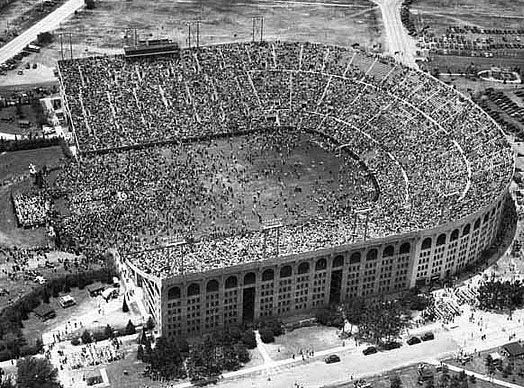
45,000-seat Tiger Stadium
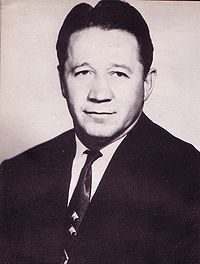
Gaynell Tinsley
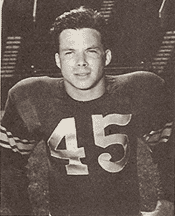
Jimmy Roshto
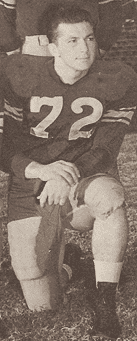
Charles Cusimano
|
"A sweating record crowd of 43,000" (United Press article) saw a defensive struggle under the lights on a field that was suspiciously wet despite two days without rain.
- It seems that Friday evening, after the Tar Heels, installed as 7-point favorites, finished their lengthy workout, a team manager sprinkled the field. Then, Saturday morning, a grounds crew member unknowingly turned on the sprinklers again.
- After a scoreless Q1, UNC had no problem driving the length of the soggy field to take a 7-0 lead. LSU then started a drive at its 5. Audaciously tossing passes from behind their own goal line, the hometown heroes advanced to midfield as the first period ended. When the march stalled, Kenny Konz deftly booted the ball out of bounds on the 2.
- With the Tiger D stopping burly FB Billy Hayes up the middle and corraling his end sweeps, Justice took to the air. The key play was a 28y looping pass to HB Bob Page. Finally, on 4th down, Hayes passed to E Art Weiner who stepped over standing up. "Kicking specialist" Egbert Williams placekicked the PAT.
The Tigers finally gave their fans something to cheer about in the second half.
- A fired up band of Tigers started the second 30 minutes by scoring in only four plays. Sophomore Jimmy Roshto, normally a DB, ran 27y off tackle "behind vicious blocking" to paydirt. However, QB Carroll Griffith's try for the tying point sailed wide.
- Justice started firing again to move the Tar Heels down the field. However, live by the pass, die by the pass. HB Lee Hedges stepped in front of an aerial near the goal line to end the threat. Then a little later, Hedges repeated his heroics to thwart the Choo Choo Express.
- Still another drive, with Hayes and Justice doing all the carrying, took NC 74y. The Tiger team as well as the fans were upset that "a pass from ... Justice to Bob Gantt was ruled complete, though the play looked as if it might have been out of bounds." Later in the series, LSU was called for a personal foul which added another 15y as the "fans hooted and booed at the ruling."
- Finally taking possession thanks to Sam Lyle's clutch fourth-down tackle at the 18, LSU began what proved to be the winning drive. "With the band swinging into 'Tiger Rag' on every first down," Billy Baggett, Ebert Van Buren (Steve's younger brother), and Zollie Toth "found holes for long gains" – 13, 17, 10, and 10 again.
- Facing 1st-and-goal from the 4, the visitors dug in their Tar Heels. Just when it looked like they would save their lead with a goal-line stand, Toth bucked over from the 4-inch line. This time, Griffith connected to make it 13-7. UNC didn't have enough time to come back.
- Linemen Nick Roussos, Jim Shoaf, and Charlie Cusimano were singled out for their outstanding work in shutting down Justice and Company. In fact, Toth outrushed the All-American, 74 in 12 carries to 48 in 11. [Toth would also outgain Justice in the four seasons each played in the NFL, 1589 to 1284.]
Tinsley's crew would rip off five more wins to earn the SEC co-championship and a berth in the Sugar Bowl.
Reference: The Fighting Tigers II: LSU Football 1893-1980,
Peter Finney
|
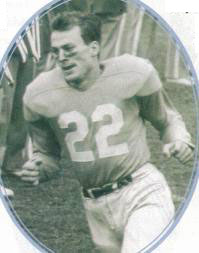
Charlie Justice
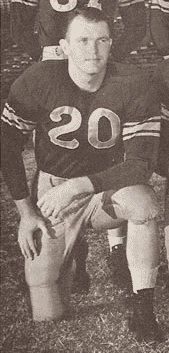
Carroll Griffith
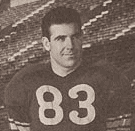
Sam Lyle
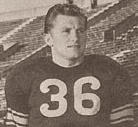
Zollie Toth
Top of Page
|
Streak Buster: Alabama 1982
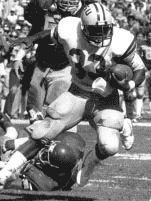
Garry James
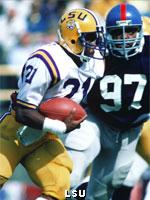
Dalton Hilliard
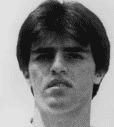
Juan Betanzos

Eric Martin
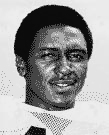
James Britt
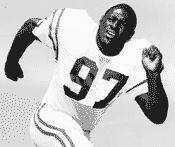
Leonard Marshall
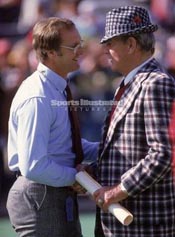
Stovall/Bryant Afterwards
Top of Page
|
No first downs in the first half! If anyone had predicted that would happen when #10 LSU (6-0-1) met #7 Alabama (7-1) on November 6, 1982, it would have been the Tide's vaunted defense shutting down the Tigers. But that was not the case on a clear, crisp day at Legion Field in Birmingham.
- Afterwards, Bear Bryant, who, it would turn out, was coaching his last season, said: I think that's the best beating we've had since the 1960s. LSU had the superior team, and I know that they had the best coach. They were better prepared.
- Jerry Stovall's #1 ranked defense held Bama's wishbone to 32 total yards and no first downs in the first half and outgained the SEC's #1 scoring team 321 to 119 in registering the 20-10 victory that was more lopsided than the score indicated.
- The victory was LSU's first over Alabama since 1970. Bryant had borrowed Texas's wishbone after that season, and the Tigers hadn't conquered it for 11 years.
After a scoreless first quarter, LSU took control in the second period.
- LSU dodged several bullets in the opening 15 minutes when a low punt-snap gave the Crimson Tide possession on the Tiger 40. Five minutes later, LB Eddie Lowe recovered a Garry James fumble at the Tide 46. On both occasions the defense forced a three-and-out.
- With 8:14 left in the half, the Tigers scored the game's first touchdown when Dalton Hilliard swept left end from the 16 and dragged two defenders into the end zone to climax an 11-play, 90y drive. Juan Betanzos kicked the point to make it 7-0. Hilliard had made another crucial play earlier in the series, taking a swing pass from QB Alan Risher and rambling 33y to the 29 where a desperation shoe string tackle prevented a touchdown.
- Uncharacteristic generosity by Bama provided LSU with 10 more points before the break. HB Joe Carter fumbled, and DB Liffort Hobley recovered at the Tide 27 with 5:37 left. Nine plays later, Risher fired a 3y strike to TE Malcolm Scott in the end zone with 0:58 left. But that would not end the onslaught.
- Betanzos' sky-kick was fumbled by Craig Turner, and DB Alvin Thomas recovered at the 30. LSU moved the ball to the six, the key play being Risher's 12y rollout to the 11. With five seconds left, Betanzos booted a 23y field goal to send the Tigers into the dressing room, and the 12,000 Tiger fans who made the trip into a frenzy, with a 17-0 lead.
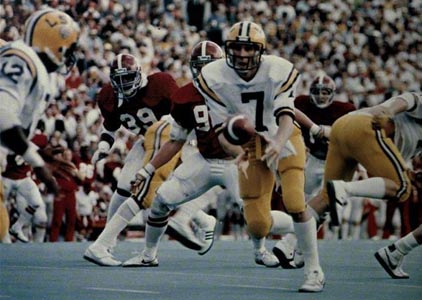
Alan Risher pitches out against Alabama in 1982. As you would expect from a proud team, Alabama started the second half on a mission.
- WR Eric Martin foolishly returned the kickoff from the end zone but reached only the 18. The fired up Tide defense pushed the Tigers backward and Clay Parker punted only 33y. The Bama offense finally recorded several first downs in a march that reached the five. But on third-and-four, LB Lawrence Williams hit QB Walter Lewis, who fumbled out of bounds at the 14. So Peter Kim nailed a 31y field goal with 8:08 left to finally put the home team on the board.
- It took only 26 seconds for Bama to score again. Hilliard fumbled a pass from Risher, and Al Blue recovered at the 28. On the very first play, Lewis threw a touchdown pass to Joey Jones, who beat CB James Britt by a stride. Just like that, Bama had cut the deficit to seven.
- But this LSU team didn't fold. Risher led a nine-play 37y drive that produced no points but regained some momentum. After the defense forced a punt, LSU mounted a methodical 13-play 67y drive that set up Betanzos' 20y field goal with 10:41 left in the game to restore the two-possession lead.
- With the defense controlling the Tide offense again, LSU dealt a final blow to the enemy cause when T Bill Elko forced a Lewis fumble that LB Gregg Dubroc recovered at the Tide 48 with 4:57 left. Proclaiming loud and clear that the final quarter is ours, not yours, the LSU offense then ran out the clock, pounding to the nine as Bear didn't even bother to call all his timeouts.
Perhaps the most telling statistic was this: Alabama had 11 third down tries and failed to convert any of them. C Danny Holcombe summarized the feelings of the Tide offense.
They're so quick. You go to block them over there, and when you get there, they're gone. Yes, they're definitely the quickest defense we've played.
LSU's performance was no fluke. Here's a list of the 21 players on the 1982 team who played in the NFL.
CB James Britt, LB Shawn Burks, S Jeffrey Dale, CB Eugene Daniel, DT Ramsey Dardar, DT Bill Elko, WR Herman Fontenot, RB Dalton Hilliard, CB Liffort Hobley, RB Garry James, LB Tim Joiner, RB Gene Lang, LB Rydell Malancon, DE Leonard Marshall, WR Eric Martin, RB Jess Myles, QB Alan Risher, TE Malcolm Scott, G Lance Smith, DE James White, and LB Lawrence Williams.
|
|
|
|











